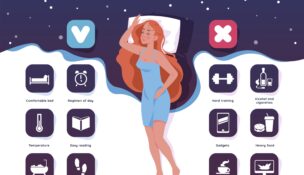How some Coloradans’ health habits changed during COVID-19
By considering these trends and tips, people may be able to adopt healthier habits at home or in the workplace
Dr. Michael Bess //August 18, 2020//


How some Coloradans’ health habits changed during COVID-19
By considering these trends and tips, people may be able to adopt healthier habits at home or in the workplace
Dr. Michael Bess //August 18, 2020//
Are you finding yourself walking more or struggling with your diet these days? If so, you are not alone.
The COVID-19 pandemic may have changed many aspects of our lives, including some of our daily habits that may have an impact on our health. Among those changes may be ways in which some people have adapted their workout routines and changed diets, according to a recent UnitedHealthcare survey.
Here’s a look at how COVID-19 may have influenced health habits–and tips to consider to help people focus on their fitness and well-being amid the on-going pandemic.
Walking and running rank as top exercise options: Most survey respondents (68%) who workout said walking has been their preferred method of exercise during COVID-19, followed by running (28%), body-weight exercises (23%), cycling (21%) and weight training at home (18%). Interestingly, baby boomers and Generation X both ranked walking as their preferred exercise option.
To make the most of your daily steps, try to walk frequently (at least six short walks per day), with intensity (one walk with at least 3,000 steps within 30 minutes), and with tenacity (at least 10,000 steps per day). For added motivation, check with your employer or health plan to determine what wellness resources may be available, including walking-related programs that may provide financial incentives for meeting certain daily step targets.
Impact on people’s diets has been mixed: In terms of eating habits, 30% of survey respondents said their diet is worse now than before COVID-19. This may have resulted from being at home with more snacking temptations throughout the day. However, some people (21%) have used the pandemic to focus on their health and report having improved their nutrition choices.
For additional support, consider online nutrition programs that are designed to encourage weight loss and help reduce the risk of developing type 2 diabetes. By accessing virtual support, people may be able to make “micro-behavior” changes, such as swapping sweet treats for fruit, that over time may contribute to well-being and reduce the risk of certain chronic conditions.
More people plan to get the flu shot: While researchers work to develop a vaccine against COVID-19, 30% of respondents said they are now more likely to receive the annual flu shot this fall. While the flu shot won’t protect you against COVID-19, it’s still an important step to help avoid contracting the flu and experiencing potential complications, such as the need for in-person medical visits.
The flu shot is considered preventive and may be covered through employer-sponsored, individual and Medicare and Medicaid health plans. Vaccines are available through primary care physicians and convenience care clinics. Visit the CDC website at cdc.gov/flu to search for a nearby care provider based on your zip code.
Some people are ready to return to the office: Many respondents (51%) said they are comfortable returning to work when the time comes; however, 28% reported that they wouldn’t be. As for common workplace norms, one-third (34%) of employed respondents said they would stop shaking hands at work no matter the circumstance, thus helping reduce the risk of viral transmission.
Some respondents (35%) said they’d use an alternative physical greeting, such as a fist or elbow bump; and others (31%) said they’d continue handshakes despite the potential risks of COVID-19. To help return to the workplace as safely as possible, consider checking with your employer to determine what changes may have been made, including physical distancing, temperature checks, on-site testing or use of protective equipment (e.g., masks, face shields). People may also have access to ProtectWell™, a return-to-workplace protocol and app may provide helpful information to employers developing their return to work approach.
Many people across the country may be facing new health challenges amid COVID-19. By considering these trends and tips, people may be able to adopt healthier habits at home or in the workplace.
Dr. Michael Bess is the Vice President of Health Care Strategies for UnitedHealthcare.

























